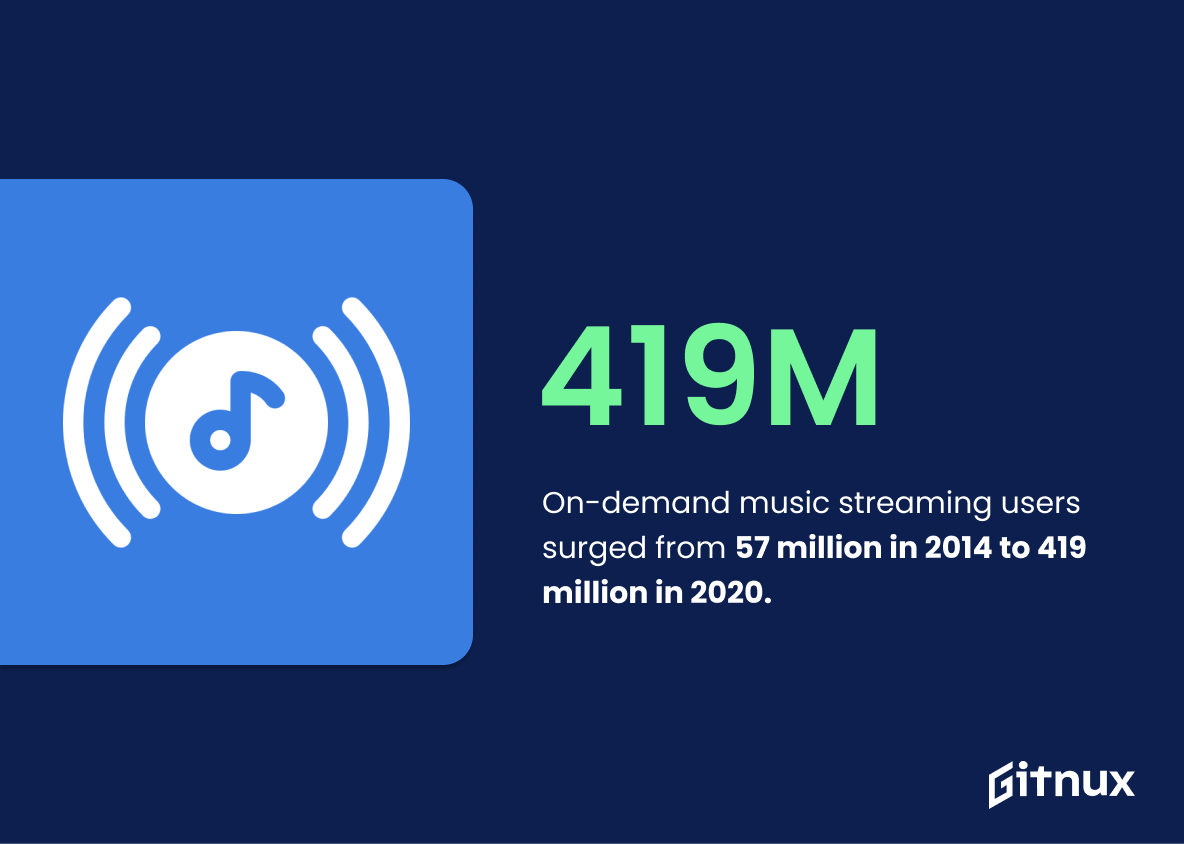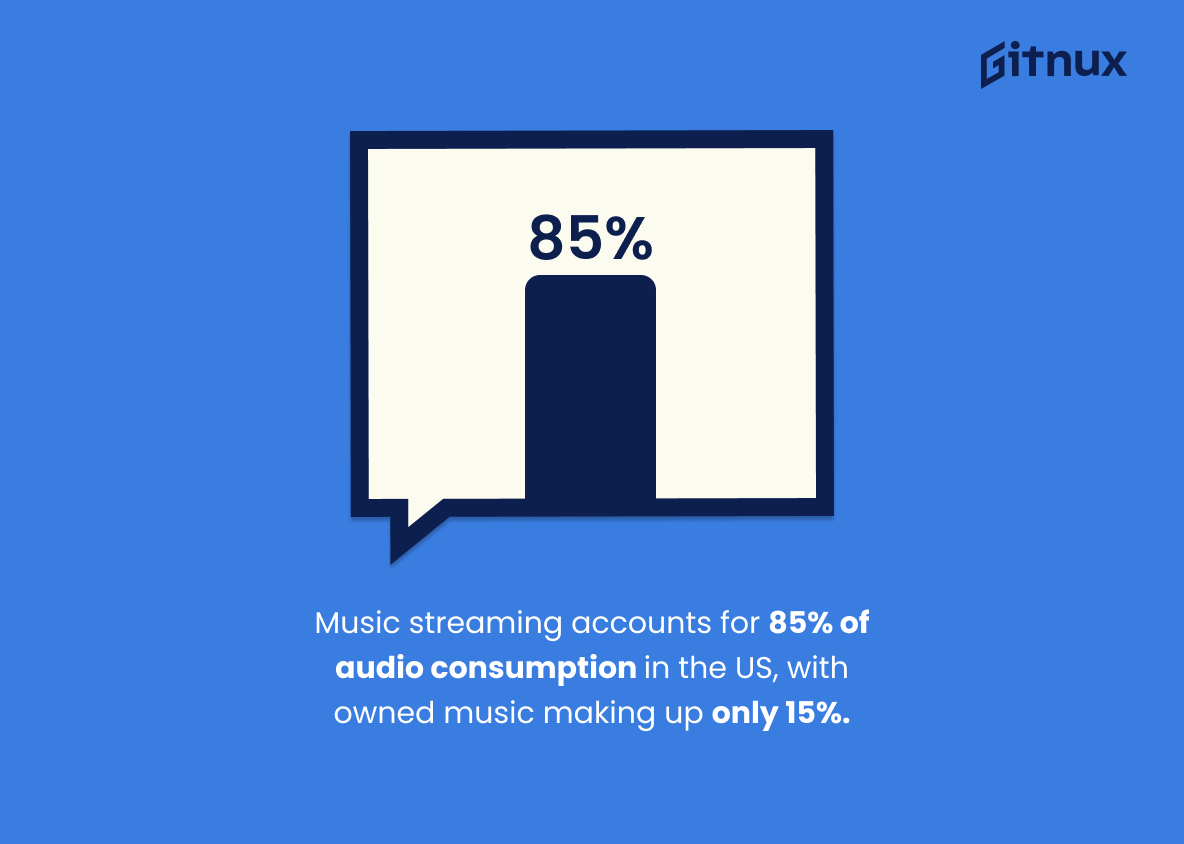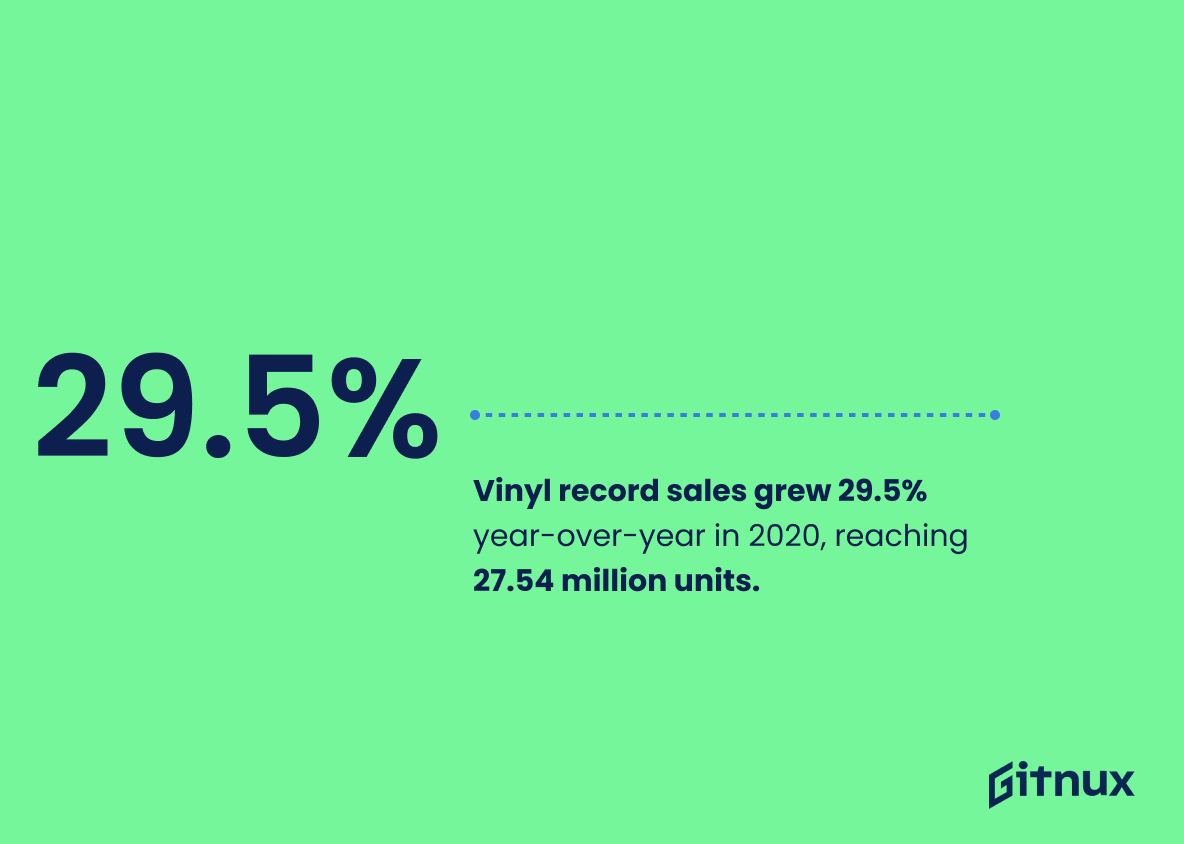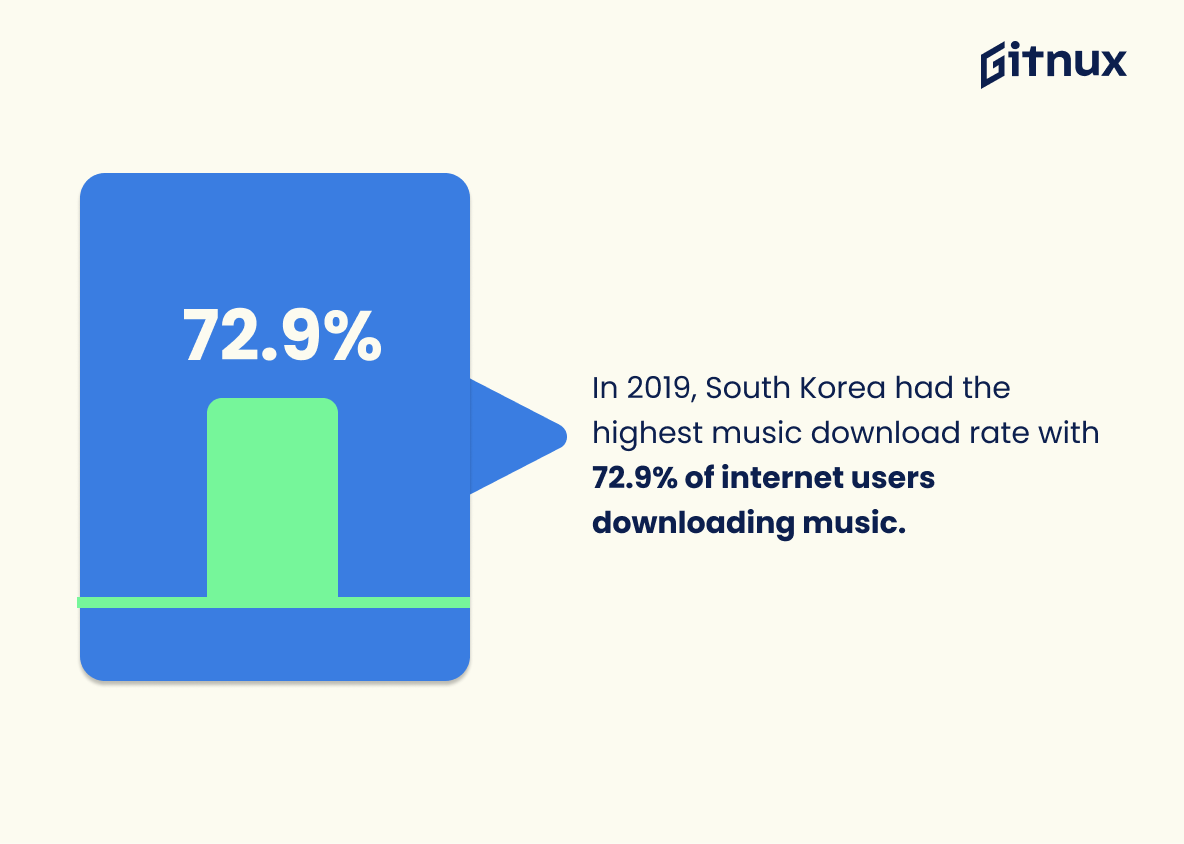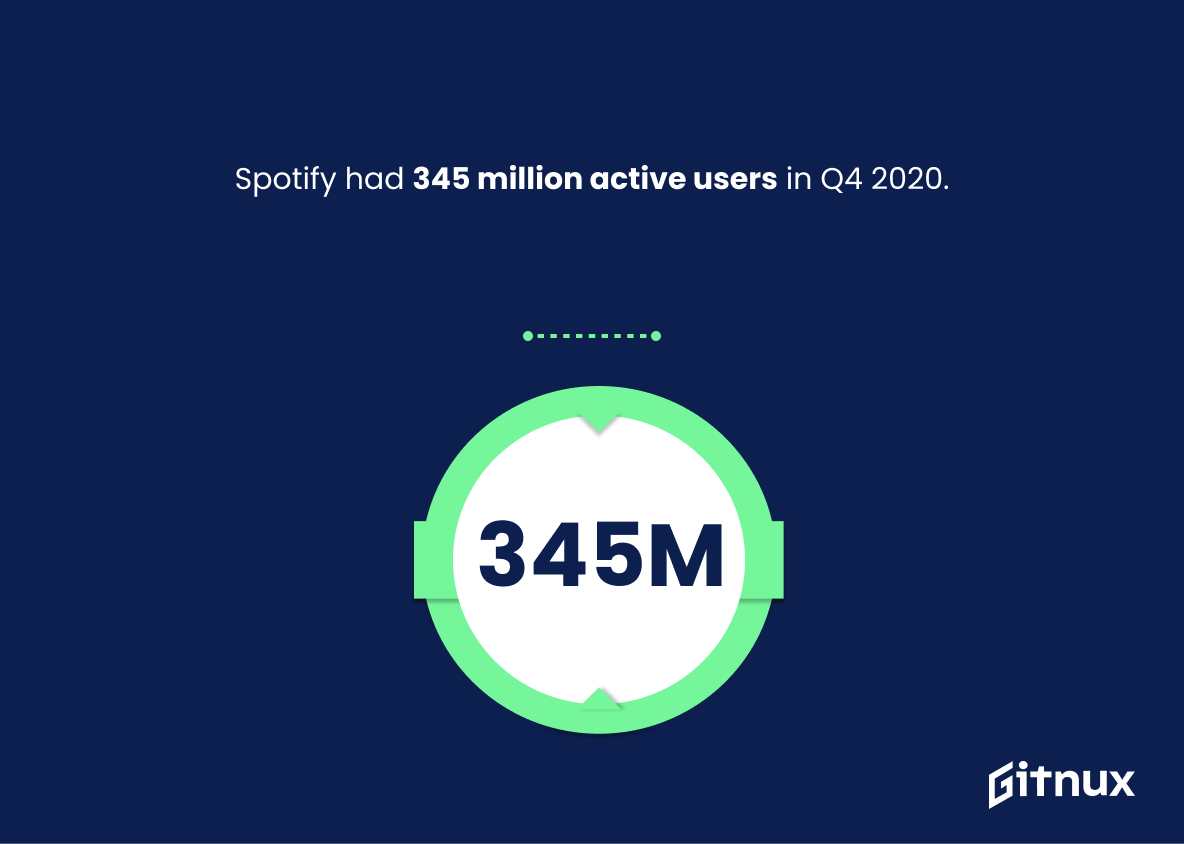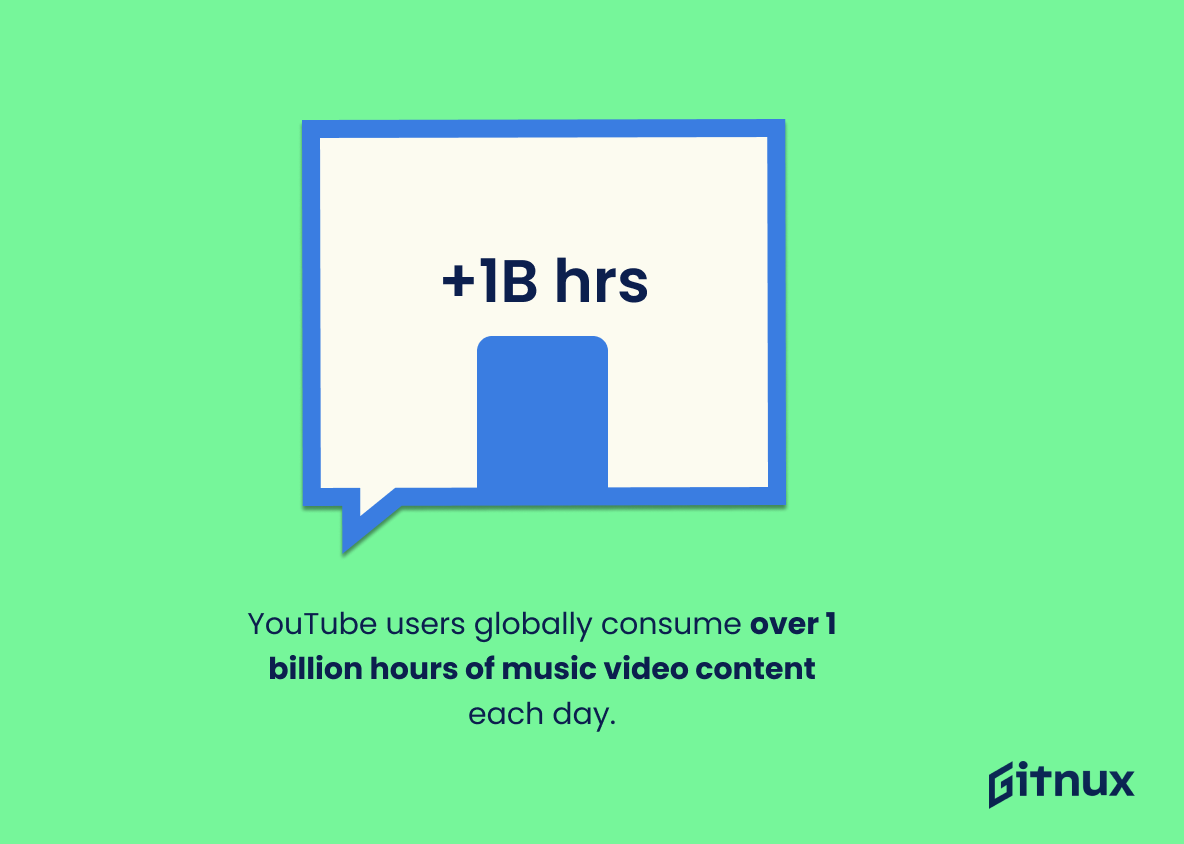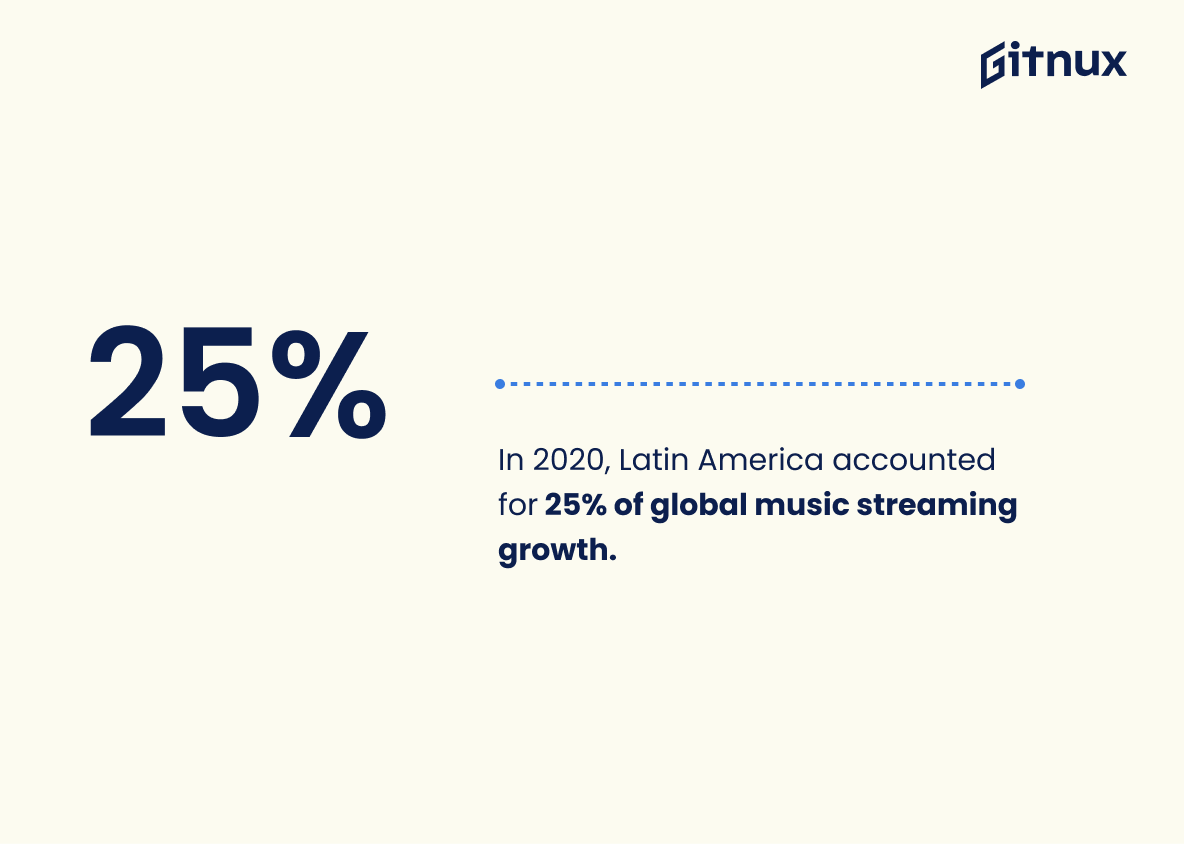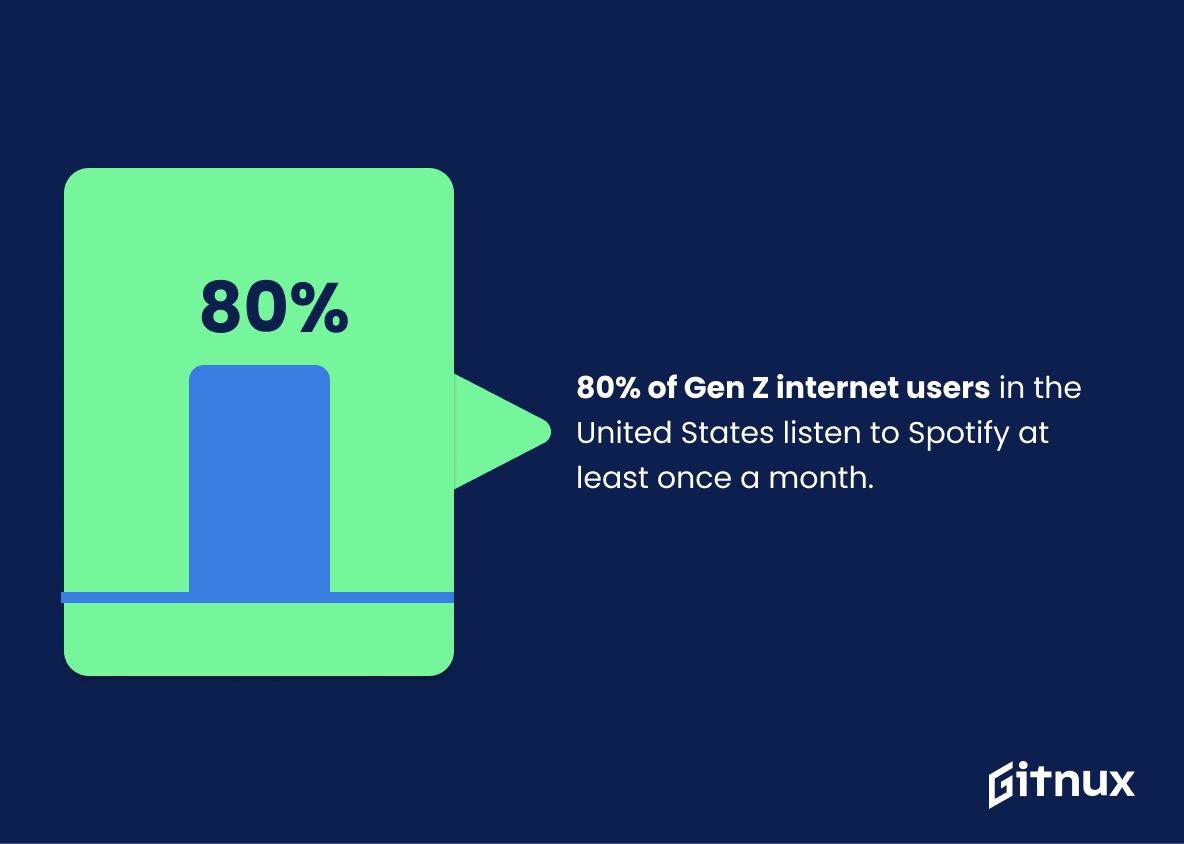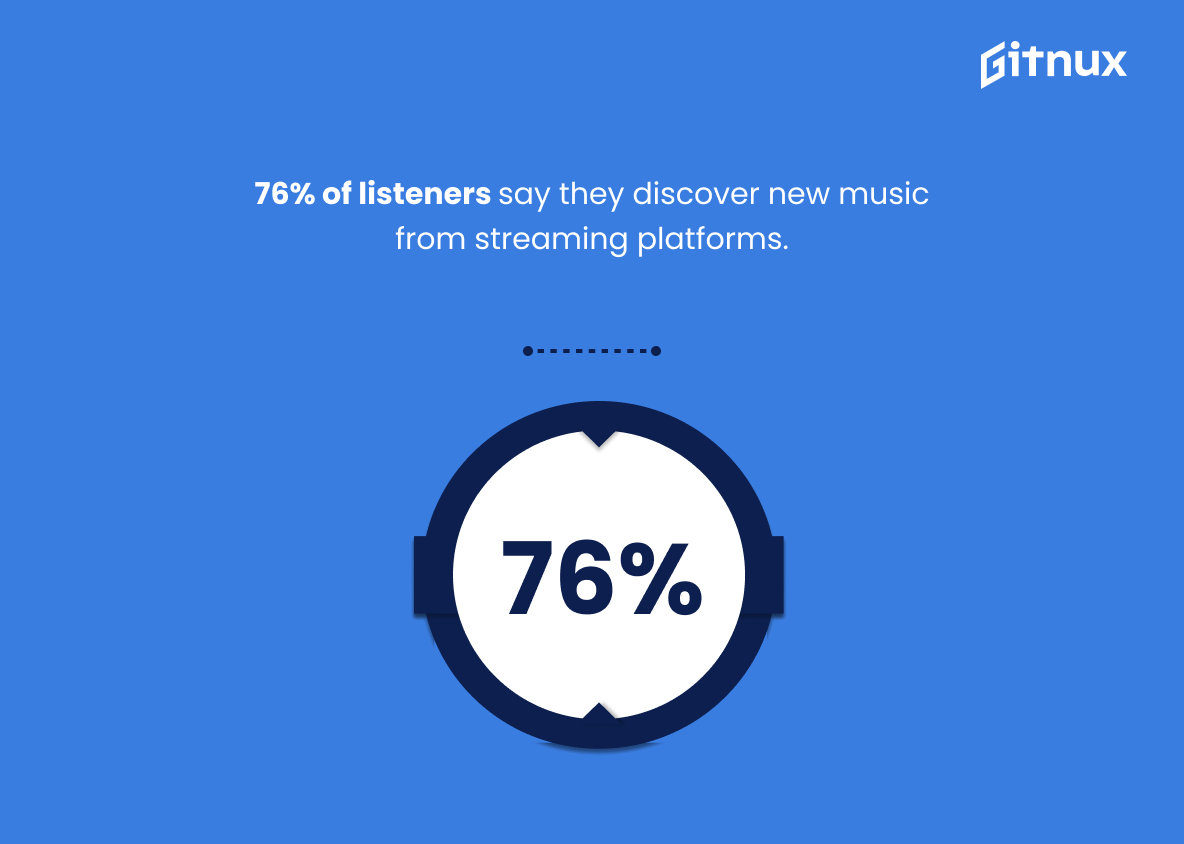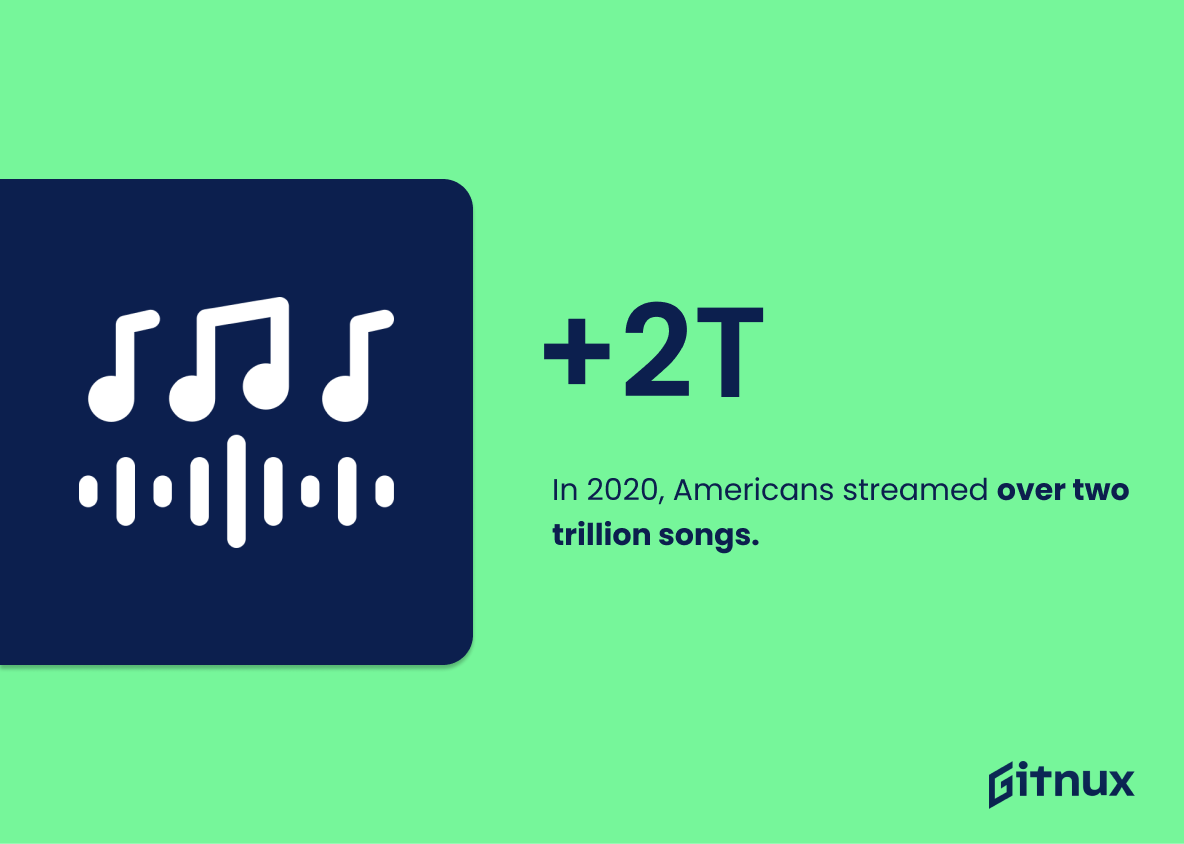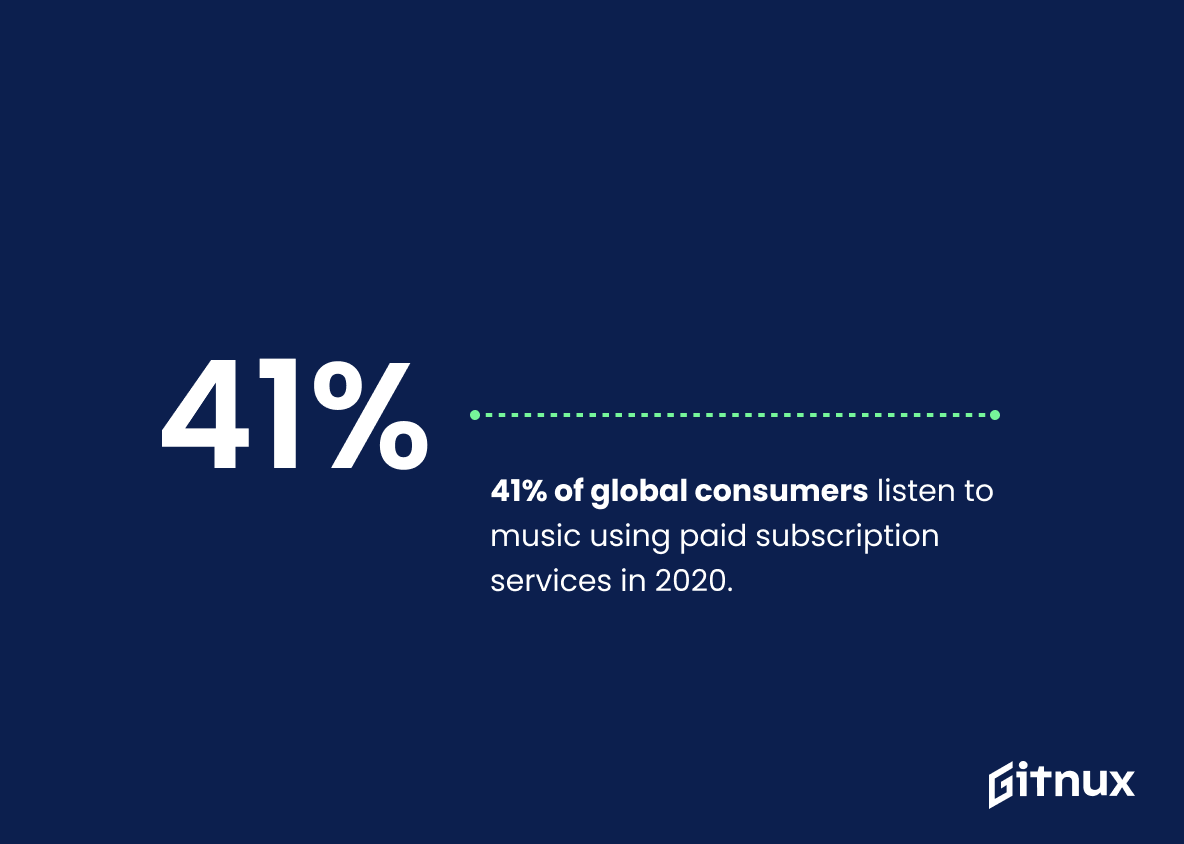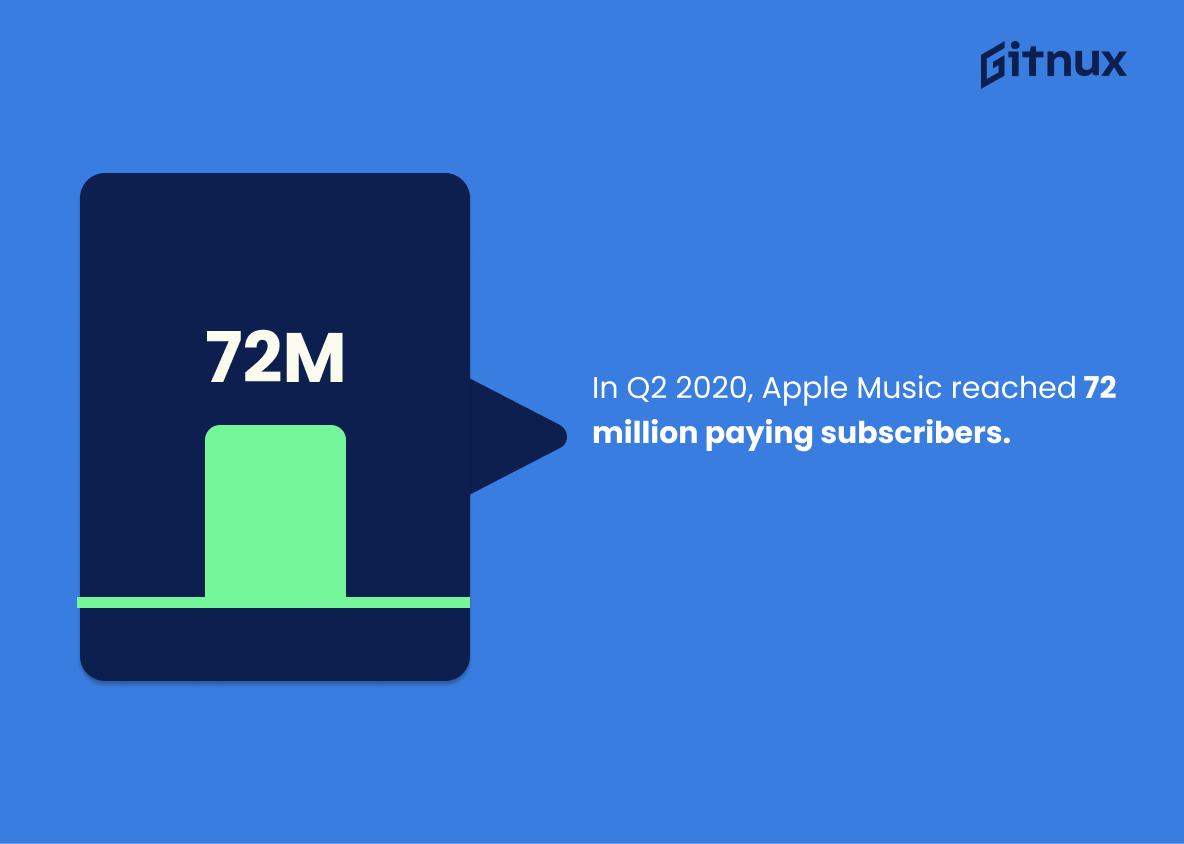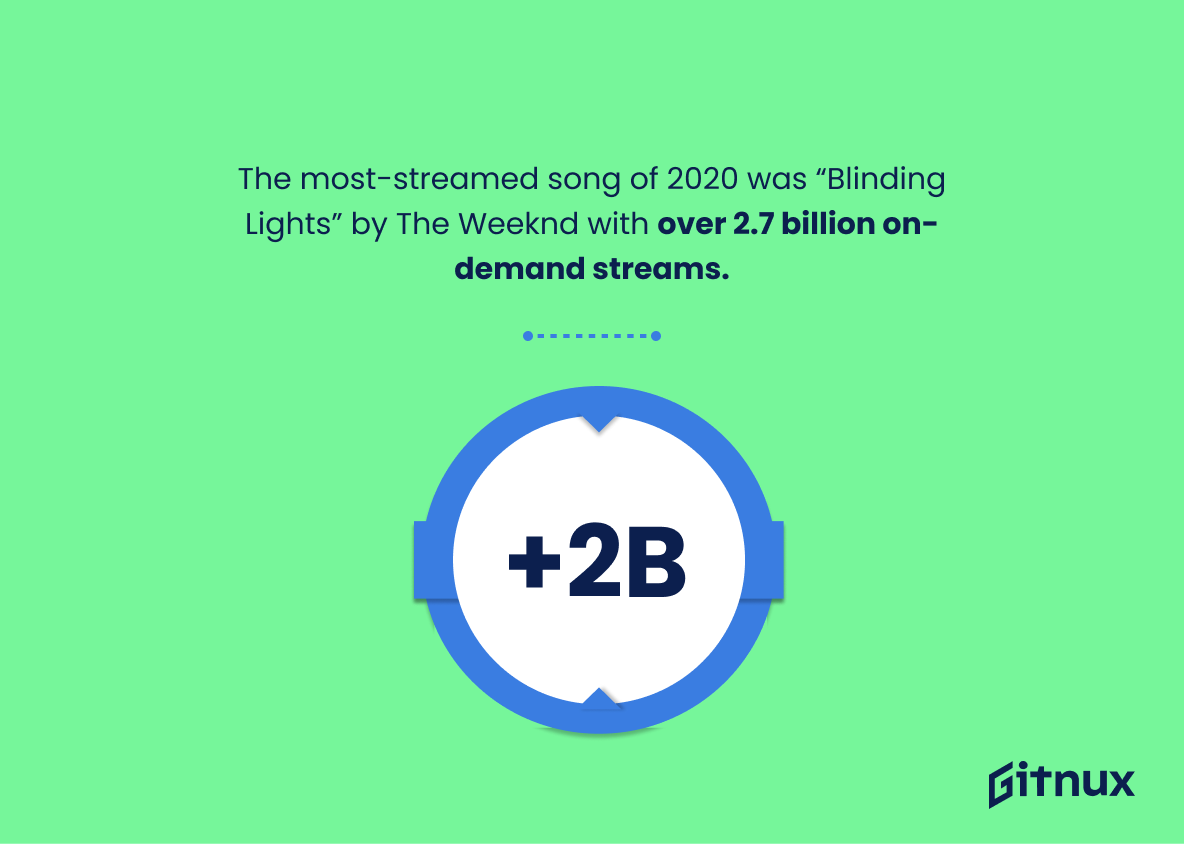The global music industry has seen a dramatic shift in the way people consume and enjoy music over the past decade. From streaming services to vinyl records, there are now more ways than ever for fans to access their favorite tunes. In this blog post, we will explore some of the most interesting statistics about how people around the world are consuming music today.
We’ll look at data from sources such as Statista, MarketWatch, Digital Music News and Nielsen Music that show us just how much money is being made by different sectors of the industry; which countries have higher rates of downloading or streaming; what platforms users prefer when it comes to accessing audio content; and even who had top-charting hits last year. So let’s dive into these fascinating facts about modern day music consumption.
This statistic is a testament to the immense power of music and its ability to captivate audiences around the world. It speaks to the immense potential of the music industry and the impact it has on the global economy. It also serves as a reminder of the importance of music consumption and its role in driving the industry forward.
In 2020, the music streaming market size was valued at $24.4 billion.
This statistic is a testament to the immense popularity of music streaming services. It shows that the music streaming market has grown exponentially in recent years, indicating that more and more people are turning to streaming services to access their favorite music. This is an important trend to consider when discussing music consumption statistics, as it demonstrates the changing landscape of how people are consuming music.
Music Consumption Statistics Overview
Worldwide users of on-demand music streaming services increased from 57 million users in 2014 to 419 million in 2020.
This statistic is a testament to the immense growth of on-demand music streaming services over the past six years. It speaks to the increasing popularity of streaming services as a primary source of music consumption, and the potential for further growth in the future. It is an important statistic to consider when discussing music consumption trends and the impact of streaming services on the industry.
In the United States, 85% of audio consumption comes from music streaming services, while only 15% is from owned music.
This statistic is a telling indication of the current state of music consumption in the United States. It reveals that the majority of audio consumption is coming from streaming services, rather than from owned music. This highlights the shift in the way people are consuming music, and the importance of streaming services in the music industry. It is an important statistic to consider when discussing music consumption statistics.
Vinyl record sales grew 29.5% year-over-year in 2020, reaching 27.54 million units.
This statistic is a testament to the enduring popularity of vinyl records, even in the digital age. It shows that despite the convenience of streaming services, many music fans still prefer the tangible experience of owning a physical record. This is an encouraging sign for the music industry, as it suggests that there is still a market for physical music formats.
In 2019, South Korea had the highest music download rate with 72.9% of internet users downloading music.
This statistic is a testament to South Korea’s passion for music, with an impressive 72.9% of internet users downloading music in 2019. It is a clear indication that music consumption is a major part of the culture in South Korea, and this statistic is an important piece of information to consider when discussing music consumption statistics.
Spotify had 345 million active users in Q4 2020.
The statistic that Spotify had 345 million active users in Q4 2020 is a testament to the immense popularity of streaming music services. It shows that streaming music is now the preferred way for people to consume music, and that Spotify is leading the charge. This statistic is a powerful indicator of the changing landscape of music consumption and is an important piece of information for anyone interested in music consumption statistics.
U.S. CD album sales reached 40.6 million units in 2020, a 26.3% decrease from 2019.
This statistic serves as a stark reminder of the impact the pandemic has had on the music industry. It highlights the significant decline in CD album sales, which has had a ripple effect on the industry as a whole. It is a clear indication of the need for the industry to adapt to the changing landscape and find new ways to reach consumers.
YouTube users globally consume over 1 billion hours of music video content each day.
This statistic is a testament to the sheer magnitude of music consumption that takes place on YouTube each day. It is a powerful reminder of the immense popularity of music videos and the impact they have on the music industry. It also serves as a reminder of the importance of music streaming services, such as YouTube, in providing access to music for millions of people around the world.
In 2020, Latin America accounted for 25% of global music streaming growth.
This statistic is a testament to the immense influence Latin American music has had on the global music streaming industry. It highlights the immense potential of the region’s music industry and its ability to drive growth in the streaming market. It also serves as a reminder of the importance of recognizing and celebrating the diversity of music from around the world.
80% of Gen Z internet users in the United States listen to Spotify at least once a month.
This statistic is a powerful indicator of the impact that Spotify has had on the music consumption habits of Gen Z internet users in the United States. It demonstrates that the streaming service has become an integral part of the lives of this demographic, and is likely to remain so in the future. This information is invaluable for anyone looking to gain insight into the music consumption habits of Gen Z internet users in the United States, and is essential for any blog post about Music Consumption Statistics.
76% of listeners say they discover new music from streaming platforms.
This statistic is a powerful indicator of the impact streaming platforms have had on the way people discover new music. It shows that streaming services have become the primary source of discovering new music for the majority of listeners, and thus have become an integral part of the music industry. This statistic is important to consider when discussing music consumption statistics, as it provides insight into how people are engaging with music in the modern age.
In 2020, Americans streamed over two trillion songs.
This statistic is a testament to the immense popularity of streaming music in 2020. It speaks to the sheer volume of music that was consumed by Americans over the course of the year, and highlights the importance of streaming services in the music industry. It is a powerful indicator of the changing landscape of music consumption, and provides valuable insight into the current state of the industry.
In 2020, digital album sales fell by 12.5% globally.
This statistic is a telling indication of the changing landscape of music consumption. It highlights the shift away from physical album sales and towards digital streaming services, which have become increasingly popular in recent years. This shift has had a significant impact on the music industry, and understanding the current trends in music consumption is essential for anyone interested in the industry.
41% of global consumers listen to music using paid subscription services in 2020.
This statistic is a telling indication of the current state of music consumption. It shows that a significant portion of global consumers are willing to pay for access to music, demonstrating the value of music streaming services. This statistic is especially relevant for a blog post about Music Consumption Statistics, as it provides insight into the current trends in music consumption.
In Q2 2020, Apple Music reached 72 million paying subscribers.
This statistic is a testament to the immense popularity of Apple Music, demonstrating that it has become a major player in the music streaming industry. It is a clear indication that music streaming is becoming increasingly popular, and that Apple Music is leading the charge. This statistic is an important piece of information for anyone interested in music consumption statistics, as it provides insight into the current state of the industry.
The most-streamed song of 2020 was “Blinding Lights” by The Weeknd with over 2.7 billion on-demand streams.
This statistic is a testament to the immense popularity of The Weeknd’s “Blinding Lights” in 2020, with over 2.7 billion on-demand streams. It speaks to the power of music to captivate and connect with listeners, and serves as a reminder of the impact music can have on our lives. It is a prime example of how music consumption has evolved over the years, and how streaming services have become the primary way people listen to music. This statistic is an important part of understanding the current state of music consumption and how it has changed over the years.
In 2020, BTS became the first Korean artist group to have a No.1 single on the US Billboard Hot 100 chart.
This statistic is a testament to the power of music consumption in the modern age. It shows that music from any corner of the world can reach the top of the charts, regardless of language or genre. It also speaks to the increasing popularity of K-pop, which has been steadily gaining traction in the US and other countries. This is a major milestone for the music industry, and it serves as a reminder that music consumption is a global phenomenon.
The most-streamed female artist in 2020 was Billie Eilish with over 2 billion on-demand streams.
This statistic is a testament to the immense success of Billie Eilish in 2020, highlighting her immense popularity and influence in the music industry. It is a powerful reminder of the impact that female artists can have on the music industry, and serves as an inspiration to other female artists striving to make their mark in the industry. Furthermore, it is a reflection of the changing landscape of music consumption, with streaming services becoming increasingly popular and providing a platform for artists to reach a wider audience. This statistic is a valuable insight into the current state of music consumption and the impact that female artists are having on the industry.
Conclusion
The statistics presented in this blog post demonstrate the immense growth of music consumption over the past few years. Music streaming services have become increasingly popular, with worldwide users increasing from 57 million to 419 million between 2014 and 2020. In addition, vinyl record sales grew by 29.5% year-over-year in 2020 while CD album sales decreased by 26.3%. YouTube also saw a surge in music video content consumption with 1 billion hours watched daily globally.
Furthermore, South Korea had the highest rate of music downloads at 72.9%, followed closely by Spotify’s 345 million active users as well as Apple Music’s 72 million paying subscribers for Q2 2020 respectively. Lastly, The Weeknd’s “Blinding Lights” was crowned most streamed song of 2020 and Billie Eilish became the most streamed female artist that same year – both achieving over 2 billion on-demand streams each. Overall these figures show how much people around the world are engaging with different forms of audio entertainment through various platforms – making it clear that digital media is here to stay when it comes to listening habits today and into 2021.
References
0. – https://www.statista.com
1. – https://www.rollingstone.com
2. – https://www.digitalmusicnews.com
3. – https://www.emarketer.com
4. – https://www.logicinbound.com
5. – https://www.nielsen.com
6. – https://www.variety.com
7. – https://www.counterpointresearch.com
8. – https://www.ifpi.org
9. – https://www.musicbusinessworldwide.com
10. – https://www.marketwatch.com
11. – https://www.billboard.com
12. – https://www.forbes.com
13. – https://www.techshout.com
14. – https://www.datareportal.com
